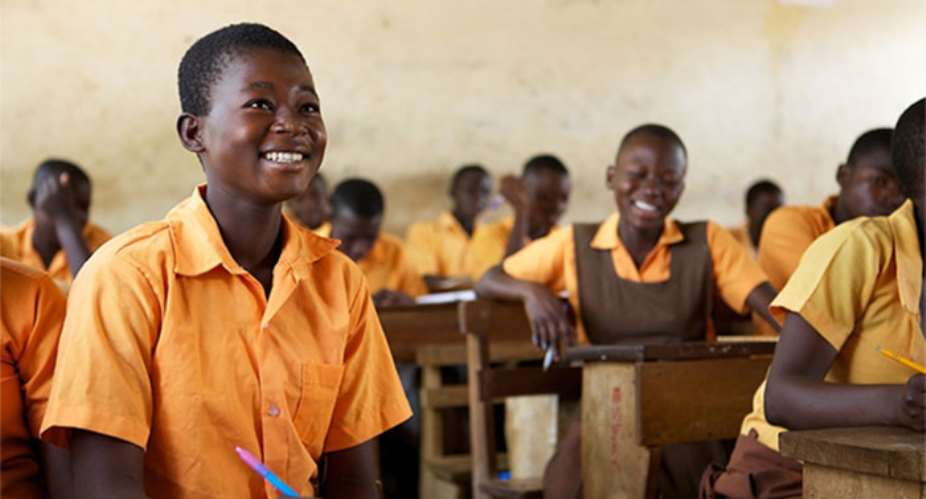A society with educated citizens would have “improved and accessible health care, improved infrastructure, a thriving sector that create jobs, access to finance for all and good governance”. And “a strong educational system that harnesses the full potential of every citizen has the power to change a country’s future and sustain its growth” (GraphicOnline.com, 24/03/2014).
Education covers basic, secondary and tertiary level, not excluding nonformal education.. The secondary education seemed to be most critical level since it is the transition level from basic to tertiary. It is also the most important educational level to attaining a productive citizenry. Yet secondary education in Sub-Saharan Africa is faced with myriad of challenges that hinder the attainment of overall and specific educational objectives. These problems include weak curricula, poor infrastructure, inadequate funding, and high teacher-to-student ratio.
With my experience as a young secondary school teacher, the most pertinent problem is the weak secondary school curricula. The current curricula in sub-Saharan Africa placed little priority on practical education. The curricula is mainly based on abstracts things, theories and conceptual models, old classics, history, politics, and a rather “chew and pour” content which places the interest of students on just to read and pass examinations. This misplaced academic curriculum is the major reason for high rate of youth unemployment in Africa. The curricula do not give attention to practical skills such as technical and vocational education. For instance, out of over 872 Senior High/Secondary Schools (SHS) in Ghana, a little above 180 of them are technical and vocational schools. This situation cut across many countries especially in Sub-Saharan Africa.
Meanwhile it is widely agreed that emphasis on technical and vocational education can translate into myriad of jobs avenues and a major panacea to drastically reduce youth unemployment. In view of this, African governments, policy makers, and all stakeholders on education need to give serious attention to secondary education that runs a curricula with 60 to70% focus on science and technology, agriculture, creative and visual arts, business and entrepreneurship, as well as technical vocational education and training. The remaining 30% of the curricula can focus on social science education.
Many developed countries in the world today has limited unemployment opportunities as a result of emphasis on hands-on-deck education. The value of training children on science, technology, engineering, and mathematics (STEM) is invaluable to the development of a nation. Perhaps, sub-Sahara African leaders must to remodel their education system to create opportunities for graduates after school. Not only is there the need for rethinking, but also the need to learn from the technically oriented educational system such as Germany. Australia, among others. If Africa countries remain adamant to change, a heated youth revolution is awaiting due to growing rate of unemployment.
To achieve this objective of redesigning the secondary education curricula to give more content to practical skills development, there is need for an agenda for curriculum change campaign across the sub-Saharan African region. The current needs of society are skills-related, and requires intensive and extensive advocacy involving a serious engagement with stakeholders such as governments, policy think-tanks, researchers, managers of educations, Civil Society and other relevant educational stakeholders. Still in pursuance of agenda for curriculum change with focus on practical skills education, long-term public sensitization and awareness campaign including massive media attentions, street possessions, and engagement of students, with active support from labour unions need to be initiated to drive the attitudinal, mental and curriculum change towards adoption and implementation of a new secondary education curricula with greater focus on practical skills such as science and technology, agriculture, business skills, creative and visual arts, and technical and vocational skills training.
Besides the curriculum change agenda, a push for massive educational infrastructure to meet the practical needs of students is required. Governments must invest heavily on classrooms, laboratories, and the procurement of practical tools for adequate skills oriental teaching and learning. In the event that, government resources remain inadequate, civil society and charity organizations should endeavor to provide support in this direction. For instance, the Secondary Education Improvement Project (SEIP) in Ghana is currently contributing a lot to STEM education in many secondary schools in the country. Many of such projects are needed across sub-Sahara Africa. In a nutshell, the current population of students in Sub-Sahara Africa need skills not theories.
WRITTEN BY:
ABU IBRAHIM AZEBRE
+233 (0) 240393109
04/09/2021





 Court dismisses Serwaa Amihere case against Henry Fitz, two others
Court dismisses Serwaa Amihere case against Henry Fitz, two others
 Stolen BRVs: Bi-partisan parliamentary probe non-negotiable — Dr. Omane Boamah
Stolen BRVs: Bi-partisan parliamentary probe non-negotiable — Dr. Omane Boamah
 Bawumia begins regional campaign tour on Monday
Bawumia begins regional campaign tour on Monday
 With great urgency backed by verifiable data, facts and figures dismiss COCOBOD,...
With great urgency backed by verifiable data, facts and figures dismiss COCOBOD,...
 EC’s statement on obsolete BVDs discovery “lies, half-truths, pure fantasies” – ...
EC’s statement on obsolete BVDs discovery “lies, half-truths, pure fantasies” – ...
 Nalerigu court impound vehicles of DCE, Director of Chereponi district for owing...
Nalerigu court impound vehicles of DCE, Director of Chereponi district for owing...
 Cop, 7 others grabbed over $523,000 Gold Scam
Cop, 7 others grabbed over $523,000 Gold Scam
 Akufo-Addo’s driver wins Dadekotopon NPP Parliamentary Primary
Akufo-Addo’s driver wins Dadekotopon NPP Parliamentary Primary
 Investigate, jail persons liable for GRA-SML contract – Manasseh
Investigate, jail persons liable for GRA-SML contract – Manasseh
 Lawyer wins Akan NPP Parliamentary Candidate primary
Lawyer wins Akan NPP Parliamentary Candidate primary
